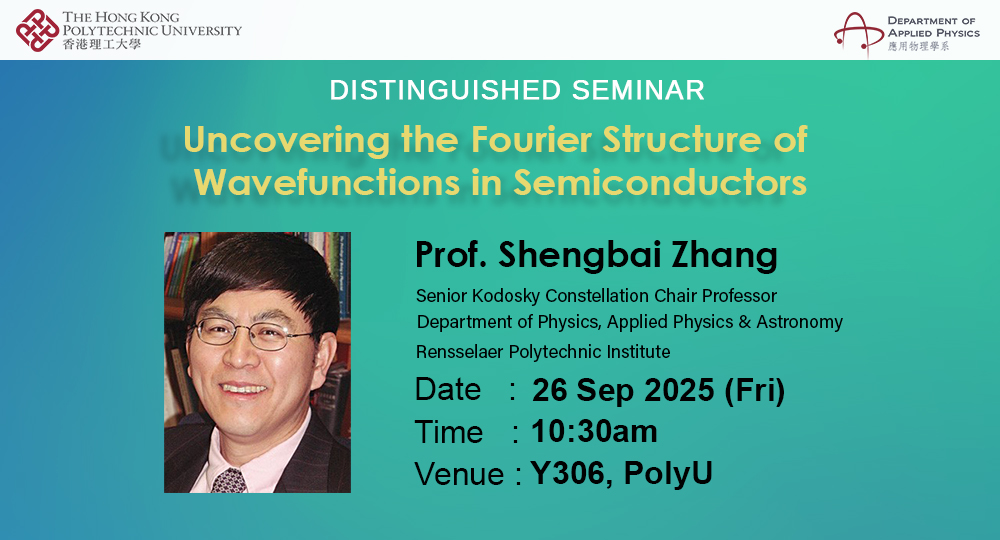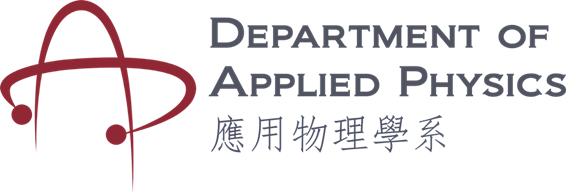AP Distinguished Seminar - Uncovering the Fourier Structure of Wavefunctions in Semiconductors

-
Date
26 Sep 2025
-
Organiser
-
Time
10:30 - 11:30
-
Venue
Y306, 3/F, Block Y, PolyU Map
Speaker
Prof. Shengbai Zhang
Summary
Symmetry dictates the physical properties of materials. In the free electron picture, the symmetry of the Bravais lattice defines a set of points, lines, and planes over which sets of planewaves are degenerate. In a real solid, point-group symmetry determines the interaction potentials in the reciprocal space which may lift such degeneracies. This results in wavefunctions which are largely single planewaves throughout the Brillouin zone (BZ), except in the vicinity of the removed degeneracies. As optical transitions between any two planewaves are forbidden, only regions of the BZ near these lifted degeneracies contribute to optical properties. Application to optical response of Si and other semiconductors reveals that a single band transition, with only two planewaves, well describes their electric susceptibility χ(1). Further, it provides a framework to understand non-linear optical response which to date is largely intractable. We show that χ(2) arises mostly from higher order degeneracy only existing along high symmetry lines/points of the BZ.
Keynote Speaker
Prof. Shengbai Zhang
Senior Kodosky Constellation Chair Professor
Department of Physics, Applied Physics & Astronomy
Rensselaer Polytechnic Institute
Prof. Shengbai Zhang is Senior Kodosky Constellation Chair Professor at Rensselaer Polytechnic Institute. Zhang earned his bachelor’s degree from Jilin University in China and his master’s and doctorate in physics from the University of California at Berkeley. renowned for his computational modeling and research in semiconductor defects. Prof. His research involves first-principles calculations, theory, and modeling of structural and electronic properties of condensed matter. Zhang is a pioneer in computation physics and materials science, renowned for his computational modeling and research in semiconductor defects. A fellow of the American Physical Society, he is author and co-author of more than 400 peer-reviewed papers with 44,000 citations, as well as the winner of numerous awards.




